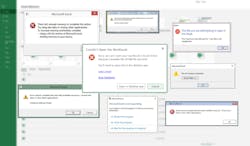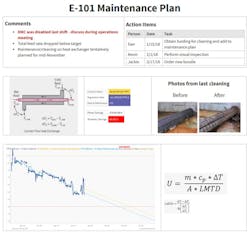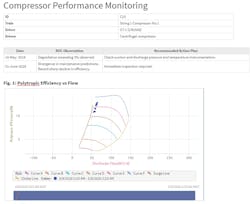Water and wastewater facilities are filled with complex, customized, and expensive equipment. This includes process-critical tanks, pumps, valves, and more, and over time, these assets deteriorate, requiring regular maintenance to continue efficient performance. Effectively managing maintenance requires advanced software and operational analysis, which can be difficult to scale. This typically results in disparate models created by different engineers, each working in their own organizational siloes.
To improve equipment lifespan and operational efficiency, water districts and municipalities are increasingly implementing flexible asset management modeling tools and maintenance programs, reducing unplanned downtime and maintenance costs. Advanced analytics solutions make this possible by unifying data sources—which enables complex and high-volume calculations—and placing iterative and user-friendly asset modelbuilding tools into the hands of subject matter experts (SMEs), empowering teams to make more informed maintenance decisions.
Challenges to asset management at scale
Advanced analytics can be an intimidating concept for engineers charged with the care of numerous equipment assets and their efficient performance. This intimidation is rooted in real-world experience because historically, performing analysis for assets spanning multiple units required manual data wrangling from multiple databases, an incredibly time-intensive activity.
Between the responsibilities to supply clean and affordable drinking water, safely dispose of wastewater, and ensure sustainable yield into the future, water districts and municipalities have little time to spare and no room for error. For this and other reasons, spending days manually conditioning, verifying, and contextualizing equipment data in spreadsheets is no longer a practical option (Figure 1).
Additionally, spreadsheets do not meet the primary requirement when dealing with data across multiple assets and units, which is providing users the ability to define critical time periods of interest so they can gather relevant context quickly. This becomes a greater necessity as the volume, granularity, and complexity of data grows.
Even when analyses overcome data access and analytics hurdles, SMEs still face the challenge of scaling. A copy + paste + swap approach to scaling analytics is not feasible for districts monitoring hundreds of assets.
Furthermore, teams face difficulties collaborating and reporting at scale. To understand an entire wastewater facility, or a collection and lift station network, teams must be capable of quickly toggling between high-level overview and single-asset detailed reports. Next, it should be easy for users to investigate events identified in these reports.
Accelerating asset management with advanced analytics
Cloud-hosted advanced analytics applications provide a solution to these challenges by establishing live connections to existing databases containing the information necessary to perform analytics across a selection of site or district assets, eliminating silos. By leveraging multiple point-and-click tools—including data cleansing and contextualization—SMEs can quickly build calculations and begin performing diagnostic, predictive, and descriptive analytics on operational and equipment data.
Equipped with tools for streamlined signal smoothing, outlier removal, and time shifting, SMEs can additionally trim noise and erroneous values from data to save time previously wasted by manual data wrangling and spreadsheet sorting. This empowers engineering teams to spend less time preparing data and more time acting on the right issues, helping meet production and sustainability goals.
Additionally, with native real-time collaboration and knowledge-sharing capabilities, advanced analytics applications help communicate insights throughout an organization by making them easy to share. This further helps alleviate siloed and error-prone analyses that occur frequently when organizations are dependent on spreadsheets and manual analysis.
Use cases show advanced analytics application benefits
Developing an asset management strategy built on predictive analytics has transformed operations throughout the water/wastewater industry, as demonstrated in the use cases that follow.
Heat exchanger monitoring
Municipality maintenance practices often lack the detail required to predict end-of-cycle (EOC) for heat exchangers due to fouling. Proactively predicting when a heat exchanger requires cleaning enables risk-based maintenance planning and optimization of processing rates, operating costs, and maintenance costs. Historically, engineers manually combined historical data in a spreadsheet, spending hours or even days formatting and filtering the content to determine patterns and make predictions. In most cases, however, there was not sufficient time to properly analyze conditions at the frequency required, and even when time was not an issue, this manual method was prone to mistakes.
By leveraging an advanced analytics application, such as Seeq, municipalities can monitor heat exchanger performance and create predictive models based on operating conditions, considering water turbidity and sludge load to better forecast performance. By comparing the present cycle with previous cycles, teams can determine the root cause of accelerated fouling, predict EOC, and remove exchangers from service for cleaning before the projected EOC date (Figure 2). Teams can apply the same formulas to similar exchangers, eliminating weeks of work, freeing up engineering time to focus on continuous improvement projects.
With enhanced analysis capabilities, engineers can monitor heat exchanger performance degradation, which in turn allows for risk-based maintenance planning. Operational plans can be optimized based on heat exchanger performance, and planned maintenance costs can be minimized, improving turnaround planning, and saving hundreds of thousands of dollars each year.
Compressor performance monitoring
When looking at plants, compressors and similar equipment are often set up with preventive maintenance schedules and then forgotten because, while they are critical to operations, compressors work behind the scenes, not directly in contact with the water being processed.
It can be difficult for water facility maintenance teams to gauge compressor performance and plan maintenance based on operating hours alone. Unplanned downtime is often imminent when the physical condition of a compressor is beyond corrective maintenance, leading to loss in air supply, unplanned downtime, and potential treatment and regulatory impacts.
Using Seeq, maintenance teams can use first principal calculations to identify leading and lagging indicators of compressor health. Compressor operating curves from OEM literature can be digitized, then represented on a scatter plot, along with the actual efficiency and head of the compressor. Maintenance personnel can then visually identify compressor health, and predict expected maintenance needs based on status and long-term projections.
After deploying these models, maintenance and outage planning teams can efficiently identify compressor risks, prioritize maintenance activities, and reduce the likelihood of catastrophic failure, saving tens of thousands of dollars per prevented shutdown.
Data-driven advantages
Efficient asset management is essential for steady plant operation, which correlates directly with profitability. As processes and equipment become increasingly complex, it is becoming all the more critical for municipalities to adopt advanced analytics to stay on top of plant performance and maintenance requirements.
Advanced analytics applications accomplish this by aggregating and analyzing enterprise-wide data, simultaneously freeing up engineering resources so experts can focus on process optimization rather than wasting time manually wrangling data. Unlocking the value of process data was a challenge in the past, but today’s applications empower municipalities to extract insights from data, providing decision-making information that can be scaled and used to increase operational efficiency.
About the Author
Sean Tropsa
Sean Tropsa is analytics engineer for Seeq. Tropsa can be reached at [email protected].



